The Market Equilibrium Trend changes from Supply-to-Demand to Demand-to-Supply Ascendancy
October 30, 2014 Leave a comment
In number of articles, I presented the theory of Market Economics as based on the conception of the tipped-off, from a Supply to a Demand-driven Global Market Trend to a Demand-to-Supply Trend that was prompted by the ongoing Globalization and rising Productivity, which new Trend is consequential to the improving Technologies, the China’s Industrialization, the Outsourcing and Moving of Manufacturing, the Internet and etc developments that have accelerated these processes for the last 20-25 years.
This article uses available data and respectful papers to prove the validity of such a conception. And, brings upfront the necessity of comprehensive assessments and the needed changes in Economics to meet these new challenges. The beginning of the 21st Century showed a tremendous effect, technologies, and globalization has on the concentration of industrial production into a few players globally.
The economic model that dominated most of the twentieth century was mass production by the many, for mass consumption by the many. Workers were consumers; consumers were workers. As paychecks rose, people had more money to buy all the things they and others produced — like Kodak cameras. That resulted in more jobs and even higher pay. That virtuous cycle is now falling apart. A future of almost unlimited production by a handful, for consumption by whoever can afford it, is a recipe for economic and social collapse. Our underlying problem won’t be the number of jobs. It will be – it already is — the allocation of income and wealth.
The global economy is awash as never before in commodities like oil, cotton and iron ore, but also with capital and labor—a glut that presents several challenges as policymakers struggle to stoke demand.
“What we’re looking at is a low-growth, low-inflation, low-rate environment,” said Megan Greene, chief economist of John Hancock Asset Management, who added that the global economy could spend the next decade “working this off.”
… “The classic notion is that you cannot have a condition of oversupply,” said Daniel Alpert, an investment banker and author of a book, “The Age of Oversupply,” on what all this abundance means. “The science of economics is all based on shortages.”
In fact, over the last few years, there has been a massive capital investment at a global level in developing new iron ore mining sites. This investment paid off in the beginning, thanks to the initial increase in demand for ore, mainly in China. However, circumstances have now changed, the pace of growth in China – the world’s largest consumer of steel and ore – has slowed markedly and consequently the global market is burdened by considerable excess supply.2 As there do not appear to be any immediate efforts (such as a rapid market adjustment on the supply side) to address the causes at the moment, prices for iron ore will remain under pressure with little prospect of them rising.3
2 For details, see Synagowitz, Bastian et al (2015a). Steel-Making Materials. Deutsche Bank Markets Research. Commodities Quarterly. March 31, pp. 92-113, 122. According to this analysis, global demand for iron ore may fall slightly in 2015 for the first time since 2009. It is therefore entirely possible that iron ore prices could fall below USD 50 per tonne in the second and third quarters.
3 See also Synagowitz, Bastian (2015b). Negative momentum in iron ore and US prices continues. Deutsche Bank Markets Research. Steel Price Tracker. March 31.
Large retailers have penetrated markets and Internet sales have brought international goods to most markets, aiding the high manufacturing capacity. The market equilibrium on a macroeconomic level has become less perceptive to Supply than to Demand factor. [1] (see Drawing 1) Large Transnational Corporations employ about 0.82% of the global workforce taking more than a quarter of the global wealth adding to the widespread poverty [2], deteriorating middle class, rising inequality, and the Earth pollution, whereas poverty brings primitive fossil fuels heating, woods cutting, old car usage[3], and etc[4].; and, deteriorating middle class adds to the poor; what about excessive inequality? – It just accelerates the whole process, but most important it prompts the overall economic stagnation: market disequilibrium caused by inadequate demand.
Most of the Emerging Markets are hit by the same problems as the poor in the Developed Markets are, whereas the results are all the same no difference between Detroit and many Undeveloped or Emerging Markets: factors affecting the market equilibrium from the demand side, expanding Earth pollution, rising Discrimination and Radicalization caused by the economic upheaval of the 2007-9 recession and sluggish recovery. While the existing middle class has shrunk the poor was not given opportunities of rising to a middle class.
Shrinking fiscal reserves and trickle-down ideologies have imposed austerity policies to infrastructures, social and educational expenses, thus holding high unemployment from Spain, Portugal, and Italy to Greece, the living standards are free falling or Bulgaria, and Romania in the European Union, where slow business activities and lack of vivid improvement prevails. However, from Guyana, Peru, and Ecuador to Bolivia, Paraguay and Colombia in South America, from Guinea-Bissau, and São Tomé and Príncipe to Republic of the Congo, Chad, and Zimbabwe in Africa, from Afghanistan, Tajikistan, and Yemen to Pakistan, Uzbekistan, and Iraq in the Middle East, etc. markets are underdeveloped, infrastructure is either undeveloped or deteriorating, corruption is roaring along with poverty and disarray!
The world was never better, but it had never possessed the technologies nor the organization to be any better, but for the last few decades. In the past, the weak technologies and markets were a natural promoters of underdevelopment, poverty and the related discrimination and nationalism, but with the great technological inventions and improvements, the Internet and WIFI, the open globalized marketplace, and etc to have such roaring poverty and underdevelopment is inexcusable, thus I consider that if these if properly used these new developments would make the world advancing into a new era of prosperity; however, only a new system of economics that apprehends these new developments and abstract itself from the trickle-down philosophy would succeed in such improvement.
Joshua Konov, 2014
[1] [PDF] Global steel 2014 – Ernst & Young Excess capacity is the biggest threat to the sector While there are signs that the outlook for demand is slowly improving, excess capacity remains the biggest threat to the steel sector. The sector is straining under the relentless pressure caused by years of excess steelmaking capacity and low margins. While some capacity is expected to be removed over the next decade, the announced addition of capacity by steelmakers out to 2020 shows that investment is still alive and well. To counteract the investment in new steelmaking capacity, we estimate that about 300 million tonnes of steelmaking capacity needs to be closed for the industry’s profit margin to reach an unsustainable level, and raise the capacity utilization rate for the sector globally, from below 80% to more than 85%. The permanent shutdown of capacity is the only real solution to bring balance to the market but in the short term, it is difficult to see this happening given state participation in many countries and additional political incentive to retain employment, regardless of profitability. The overall net effect, however, has been an increase in steelmaking capacity despite the Chinese Government mandating 80 million tonnes of capacity to be removed restructuring and consolidation in the Chinese market, a handful of large Chinese steel players will emerge, leading to global competition intensifying. “Steel producers should test the vulnerability of their business models and the resilience of their strategies to ensure sustainable growth.“ Anjani Agrawal
[2] “It has been argued for more than 200 years that economic growth is associated with the manufacturing sector (Baumol 1967, Dercon 2014, Gelb 2014, Kaldor 1966, Rodrik and McMillan 2011, De Vries et al 2013, Winters 2010, UNIDO 2009). Services have been considered non-tradable, menial, low productivity, and low-innovation (McCredie and Bubner 2010). The East Asian Tigers are the classic success stories about how the conventional path to growth goes through industrialization. However, this conventional path to development seems to have hit a roadblock in other regions, especially low-income countries in Africa and South Asia. Indeed, several high-level reports on Africa—the 2014 African Transformation Report, the African Union’s Agenda 2063, the African Development Bank’s long-term strategy, the UN Economic Commission for Africa’s 2013 report, and UNCTAD’s 2012 report—have all raised concern about limited industrialization and technological progress. Indeed, in many African economies, manufacturing—the sector that led rapid development in East Asia—is declining as a share of GDP. The worry is that without a major transformation, Africa’s recent growth spurt may soon run out of steam.”
[3] Mongolia is the world’s most polluted country and also home to one of the world’s most polluted cities — Ulaanbaatar. The country’s main sources of pollution are its traditional coal-fueled stoves and boilers used for heating and cooking, as well as congested traffic and old cars. Heating is essential for the survival of its people for about eight months of the year. The country uses everything from coal, wood to refuse, such as black tar-dipped bricks and old car tires to fuel stoves and boilers World’s Most Polluted Countries
[4] Neither of the top 10 polluted sites is in the U.S., Japan or western Europe. However, a lot of the pollution in poorer countries has to do with the lifestyles of richer ones, noted Stephan Robinson of Green Cross Switzerland—for example, a tannery in Bangladesh that provides leather for shoes made in Italy that are sold in New York City or Zurich. “The pollution we see is not coming from the major global industrial companies, it’s all from small mom-and-pop shops, which prepare the raw materials that we then later use,” Robinson said. Or, in the case of Agbogbloshie, Ghanaians are polluted by the electronic devices Westerners have already used. Local people in such areas, Robinson added, “are very often polluting their environment not because they think it is fun but because it is a question of survival.”
Drawing 1 With the raised demand (from D1 to D2) the high Elasticity of the supply that has come with the ongoing Globalization and rising Productivity matches the demand by expanding (from S1 to S2) and thus living the same market equilibrium price (P1&P2). Such Supply Elasticity is probable to a certain turning point which approximate quantities are estimated (see next paper on “Probability Factors of Quantities Proximity”) 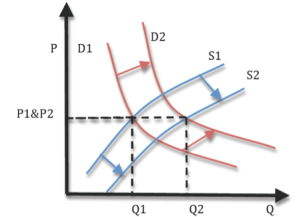
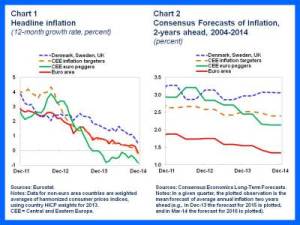
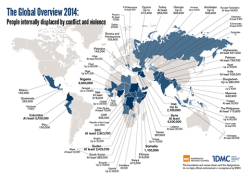
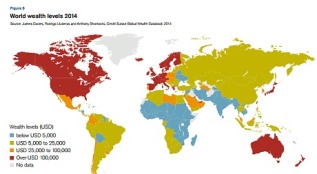
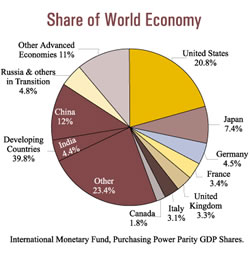
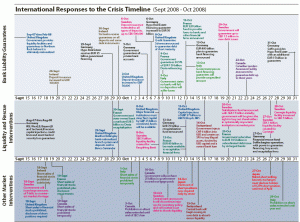
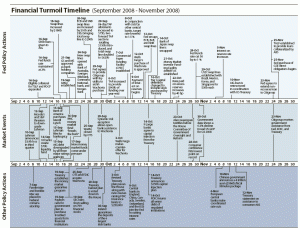
Recent Comments